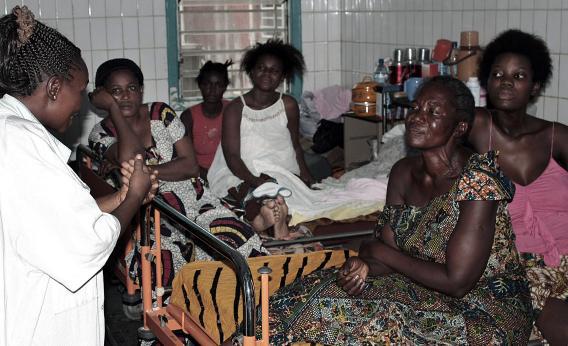I was talking recently with an old friend about the issues discussed in the three posts from last week on the western approach to African health care issues. My friend, Dr. Randi Hutter Epstein, has covered global health and medical issues for decades, and she mentioned anothe counter-intuitive trend that has emerged in this area. It’s known as the “Fertility Paradox.” And I’ll let Randi take it from here - MM
When Dr. Pasquale Patrizio, the director of the Yale Fertility Center and professor of obstetrics and gynecology, told me about his latest project, I thought I must have heard him wrong. He and a cohort of fertility experts aim to create low-cost fertility clinics for poor couples in poor countries. I mean, isn’t the problem there just the opposite? Staunching a population explosion?
Well yes and no.
The World Health Organization predicts that by 2050, the developing world will add 35 million people annually. Yet, at the same time in those same overpopulated regions, about one in three couples are infertile. It doesn’t take a math genius to figure out that some people are having litters of kids and others none at all. Public health officials call it the Fertility Paradox.
Ideally, what’s needed, they say, are reproductive health centers that offer three things: quality prenatal and birthing care; contraceptive to women having too many babies, and fertility treatment to those who can’t have any. But there’s the rub. Ideally. The obstacle—and it’s a huge one—is turning their vision into a reality. And yet, the notion seems to have been gaining momentum in the last few years.
“The irony,” Dr. Willem Ombelet, a professor of obstetrics and gynecology at the Institute for Fertility Technology in Genk, Belgium, told me “is that being childless in developing countries is much more difficult than being childless is the developed world and yet that’s where the efforts are being made.” (The non-ironic part is that fertility treatment is a huge money-maker in developed countries.)
All too often, women from poor villages who cannot have babies are cast aside from their marriages and are deemed unemployable—sometimes they resort to prostitution. What’s more, say some public health officials, infertility is a disease and just like anyone with a treatable ailment, they deserve the right to therapy too. Ombelet created a not-for-profit called The Walking Egg. Patrizio hopes that Yale will take the lead and is working with colleagues in other institutions on a not-for-profit called Friends of Low Cost Fertility.
And while cheap IVF sounds like an oxymoron, a few teams say they are beginning to test techniques. Here are their ideas, in a nutshell:
1. Fewer diagnostic tests. You just need to know just enough to guide the course of treatment.
2. Cheaper drugs. Clomiphone citrate pills rev up the ovaries but not as much as the potent hormone shots—and at a fraction of the price.
3. Modified Lab rather than a multi-million dollar set-up.
Number three is the trickiest of all. University of Colorado’s Dr. Jonathan Van Blerkom, a pioneering embryologist and laboratory director at Colorado Reproductive Endocrinology at the Rose Medical Center in Denver, is working with Ombelet on a portable lab, that includes a shoebox size incubator and small test tubes for the embryos.
But not everyone is as gung-ho. Dr. Wendy Chavkin, a Columbia University professor of population and family health, the author of Global Motherhood and former director of the Soros Reproductive Health and Human Rights Fellowship, said it’s back to public health 101. “From a public health vantage point, there are certain principles about how to allocate resources and address population level health problems- and it does not only reflect what people want,” said Chavkin. “It’s about the severity of the problem, numbers affected, the underlying causes, and the ability to effectively intervene. There are human rights evidence based approaches for how to construct or redesign a health care package. In my book, the currently available fertility treatments would rank pretty low, especially in low resource settings where curable infectious diseases and their consequences, including cancers, too often go untreated.” Chavkin was also a director of the Soros Reproductive Health and Human Rights Fellowship.
